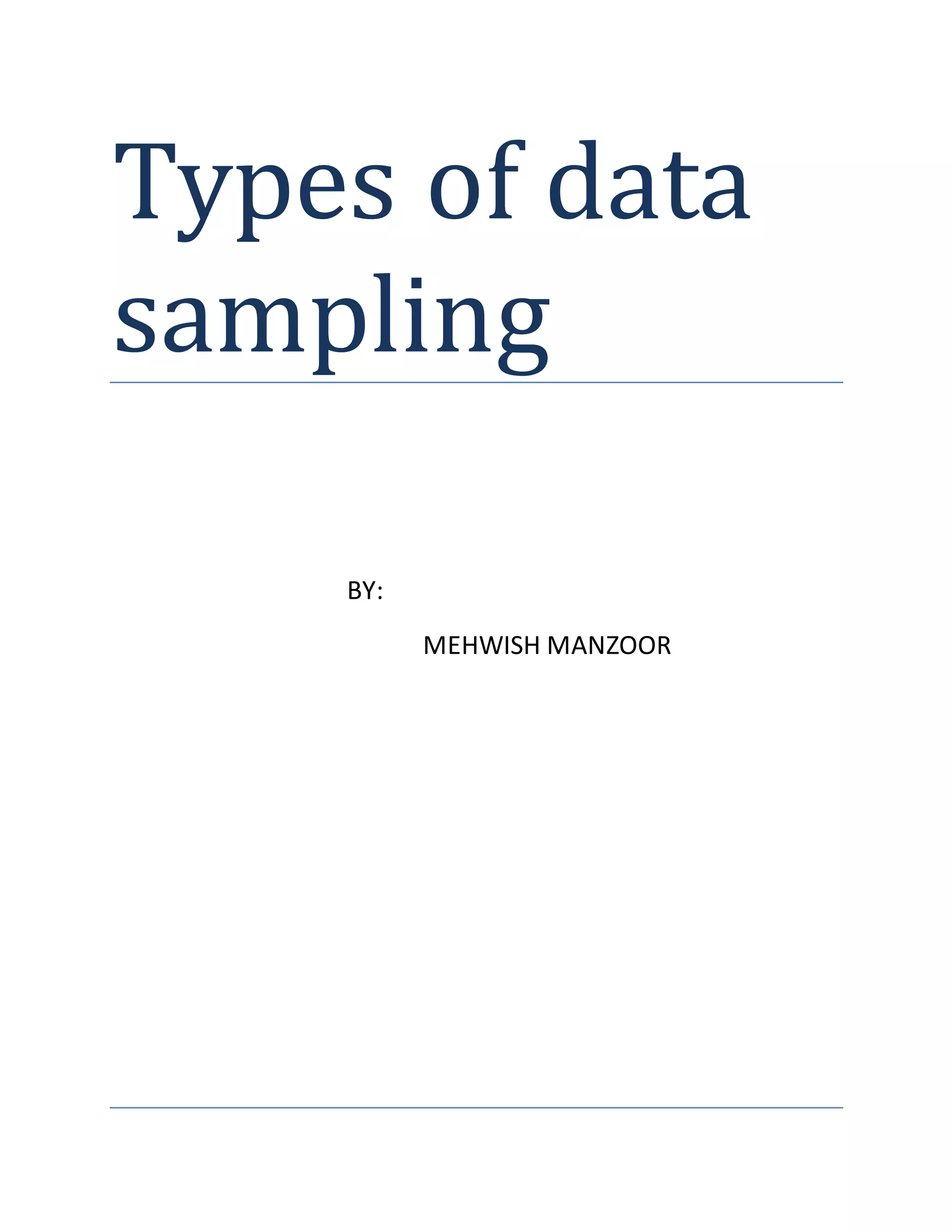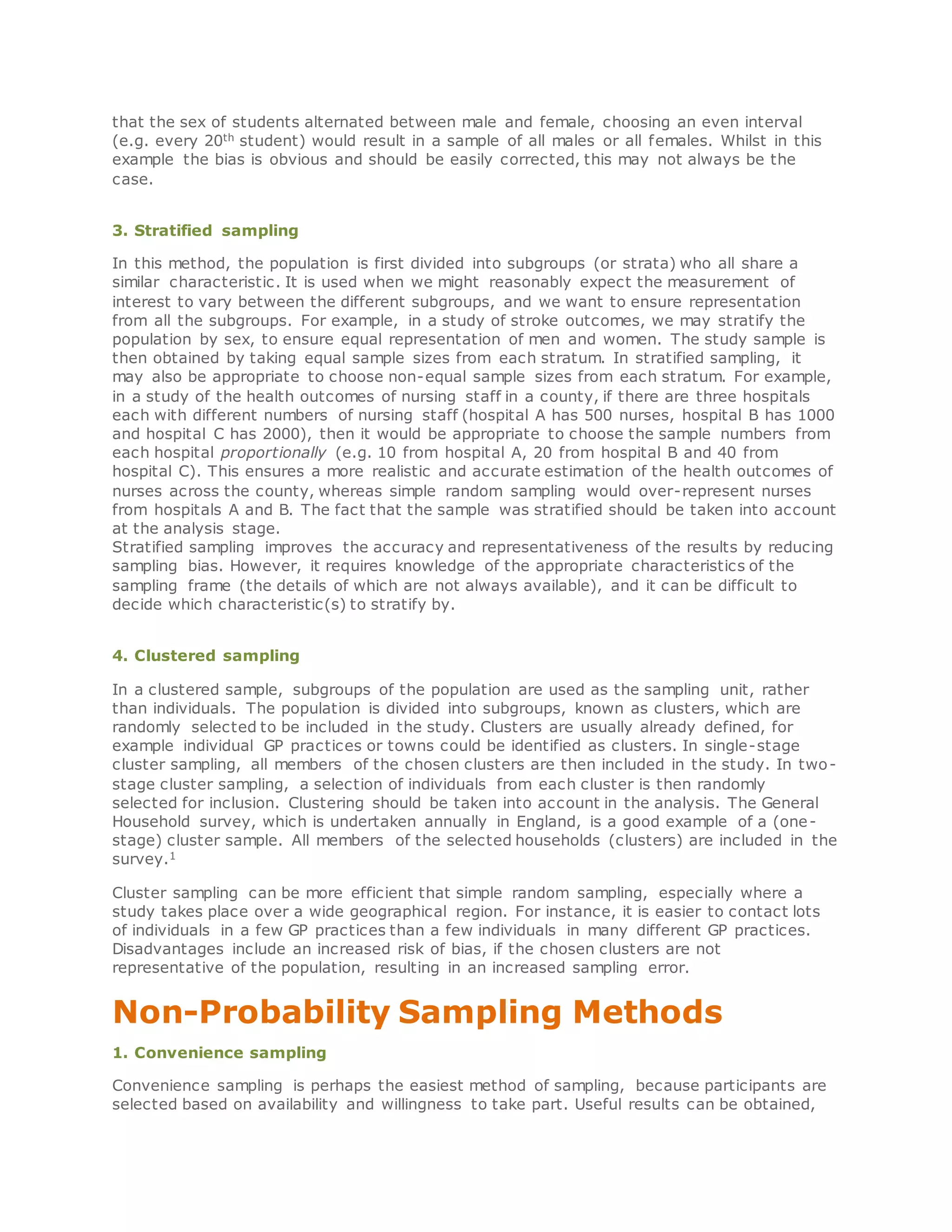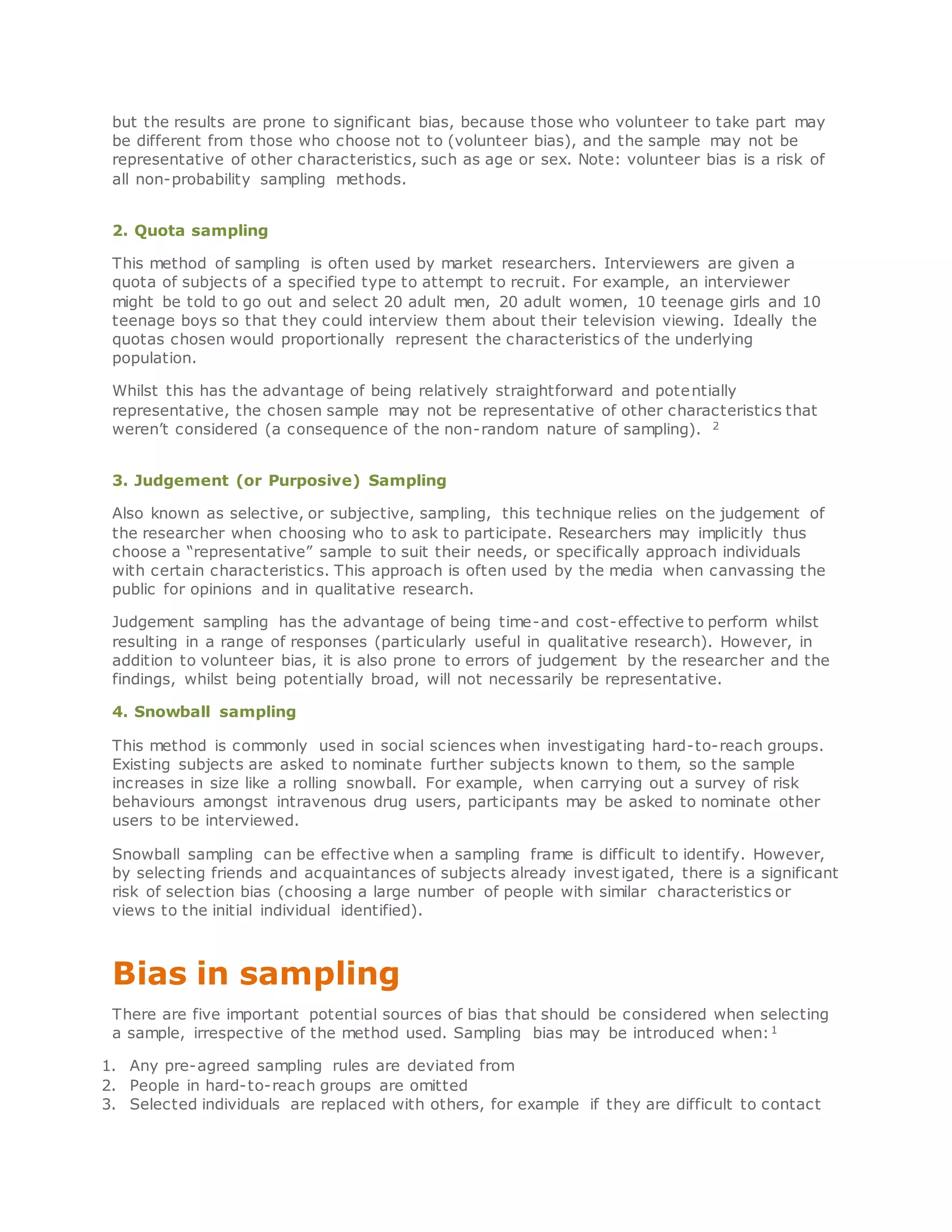The document outlines various data sampling techniques, categorized into probability and non-probability sampling. Probability sampling includes methods like simple random, systematic, stratified, and cluster sampling, which allow for generalizable results, while non-probability sampling methods like convenience, quota, judgement, and snowball sampling are easier but risk non-representative samples. Each method has its advantages and disadvantages in terms of bias, cost, and convenience, emphasizing the importance of selecting appropriate sampling techniques based on research goals.




